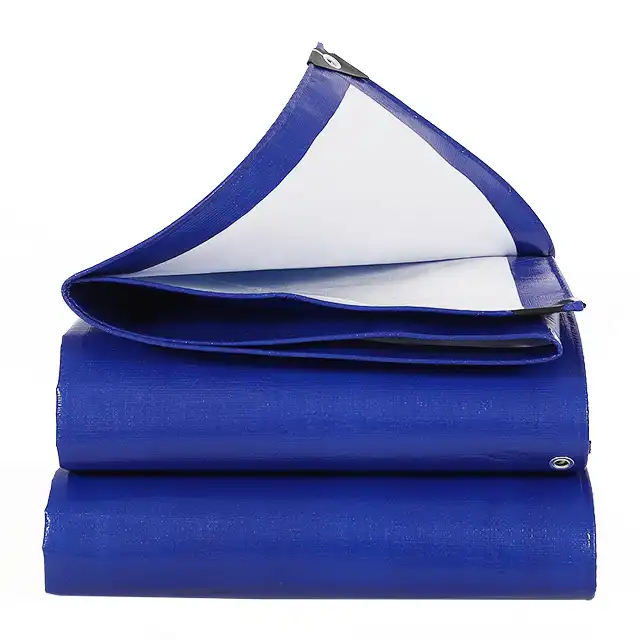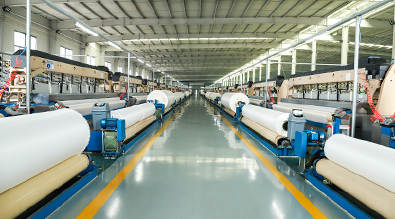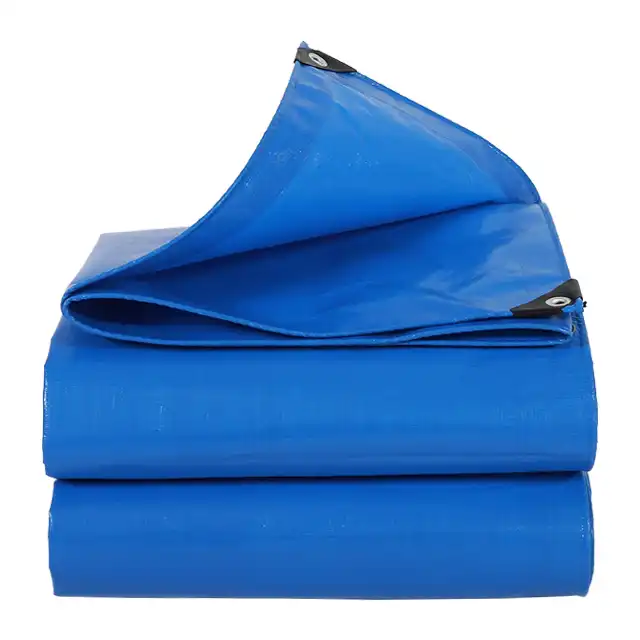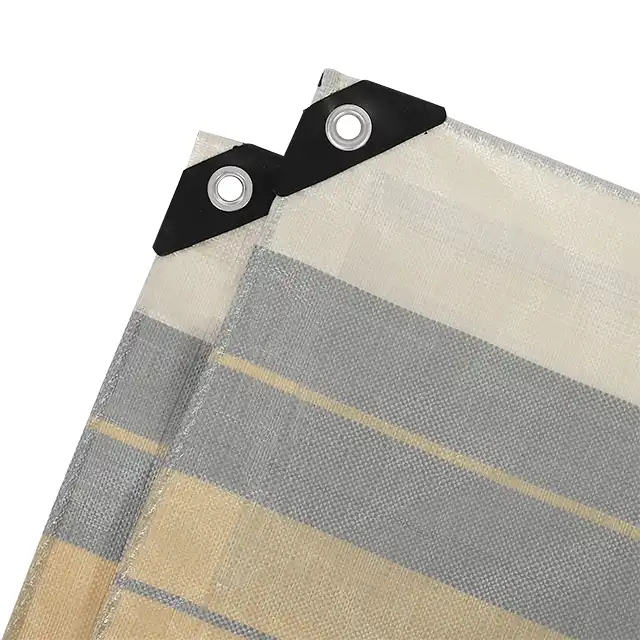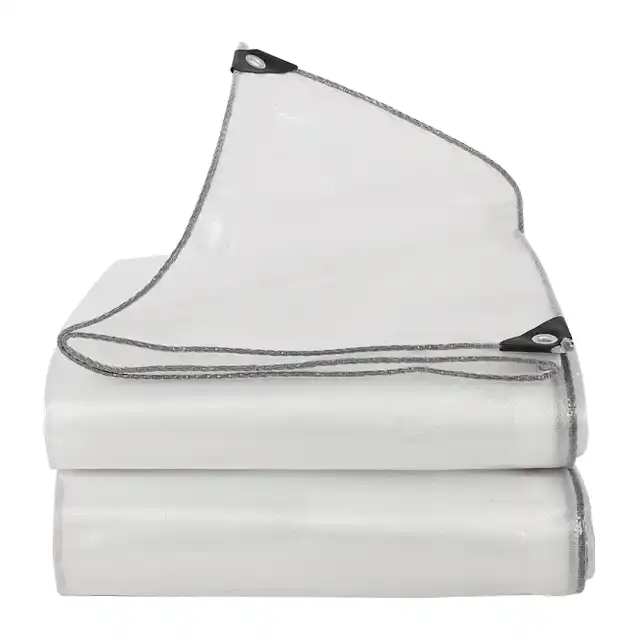Roof Tarps: The Rising Trend in Storm Protection
In recent years, roof tarps have emerged as an essential tool in storm protection strategies across weather-vulnerable regions. As extreme weather events increase in frequency and intensity, homeowners and businesses are turning to high-quality, durable roof tarps as both preventative measures and emergency solutions. These versatile protective coverings provide critical defense against rain, wind, and debris while offering a cost-effective alternative to immediate repairs during storm seasons. Made from advanced polyethylene materials, modern roof tarps deliver superior waterproofing capabilities along with impressive tear resistance and UV protection, making them the rising trend in comprehensive storm protection systems for properties of all types.
Understanding Roof Tarp Technology
Evolution of Roof Protection Materials
 Roof tarps have undergone significant technological advancements in recent decades, transforming from simple canvas coverings to sophisticated protection systems. Traditional tarps often failed under extreme weather conditions, leading manufacturers like Linyi Shengde Plastic Co., Ltd. to develop revolutionary polyethylene-based roof tarps. These modern solutions are manufactured through an intricate process of high-density weaving of polyethylene fibers, which are then laminated on both sides to create a completely waterproof barrier. The evolution has been driven by consumer demand for more reliable storm protection options that can withstand increasingly severe weather patterns. Today's roof tarps feature enhanced UV stabilization treatments ranging from 1% to 7%, allowing them to maintain structural integrity even after prolonged sun exposure. This technological progression has established roof tarps as essential components in comprehensive property protection strategies, with varying weights from 65gsm for light applications to heavy-duty 280gsm options for extreme conditions. The sophisticated manufacturing techniques employed in creating these protective coverings ensure superior performance compared to their historical counterparts, marking a significant milestone in storm protection technology.
Roof tarps have undergone significant technological advancements in recent decades, transforming from simple canvas coverings to sophisticated protection systems. Traditional tarps often failed under extreme weather conditions, leading manufacturers like Linyi Shengde Plastic Co., Ltd. to develop revolutionary polyethylene-based roof tarps. These modern solutions are manufactured through an intricate process of high-density weaving of polyethylene fibers, which are then laminated on both sides to create a completely waterproof barrier. The evolution has been driven by consumer demand for more reliable storm protection options that can withstand increasingly severe weather patterns. Today's roof tarps feature enhanced UV stabilization treatments ranging from 1% to 7%, allowing them to maintain structural integrity even after prolonged sun exposure. This technological progression has established roof tarps as essential components in comprehensive property protection strategies, with varying weights from 65gsm for light applications to heavy-duty 280gsm options for extreme conditions. The sophisticated manufacturing techniques employed in creating these protective coverings ensure superior performance compared to their historical counterparts, marking a significant milestone in storm protection technology.
Material Science Behind Effective Storm Barriers
The exceptional performance of modern roof tarps in storm protection scenarios stems directly from advanced material science principles applied during their manufacturing. Companies like Sendow Tarpaulin utilize HDPE (High-Density Polyethylene) woven fabric as the core structural component, which is then coated with LDPE (Low-Density Polyethylene) to create a virtually impenetrable barrier against moisture. This combination delivers the perfect balance between flexibility and strength—crucial characteristics for effective roof protection during storms. The specialized mesh count structure (ranging from 10×10 to 14×14 threads per square inch) creates a foundation that resists tearing even under intense wind pressures while maintaining a lightweight profile for easy installation. The science extends to the specialized coating processes that enhance waterproofing capabilities while simultaneously providing arctic flexibility, allowing the material to remain pliable even in freezing temperatures without cracking or losing protective properties. This advanced material construction enables roof tarps to deliver 100% waterproof protection while remaining tear-resistant and providing essential UV shielding. Additionally, these materials are engineered to be anti-corrosive and shrink-proof, maintaining their protective dimensions regardless of environmental conditions. The scientific approach to material selection and processing has revolutionized roof tarp technology, creating barriers that effectively stand between valuable property and destructive storm elements.
Performance Metrics of Quality Roof Tarps
Understanding the performance capabilities of roof tarps requires familiarity with key metrics that determine their effectiveness in storm protection scenarios. Professional-grade roof tarps from manufacturers like Linyi Shengde Plastic Co., Ltd. are evaluated based on several critical performance indicators that directly impact their protective capacity. Material thickness, measured in mils (with premium options ranging from 7-12 mil), significantly influences puncture resistance and overall durability during high wind events. Weight classification, measured in grams per square meter (gsm), ranges from lighter 100gsm options to robust 180gsm middle-duty versions, with selection depending on anticipated weather severity. UV resistance rating, represented as a percentage of added UV inhibitors, determines how effectively the tarp will withstand solar degradation over extended deployment periods. Enhanced tear strength, achieved through specialized weaving techniques and quality yarn selection, ensures the tarp maintains structural integrity even when subjected to extreme tension during storms. Waterproof rating, perhaps the most crucial metric, guarantees 100% water impermeability when properly installed. Temperature flexibility range indicates how the material will perform across various weather conditions, with premium roof tarps maintaining functionality from freezing to extremely hot temperatures. These performance metrics provide objective measures for evaluating roof tarp quality and help consumers select appropriate protection levels based on their specific environmental challenges. Professional contractors and disaster response teams rely on these standardized metrics when deploying roof tarps as part of comprehensive storm protection strategies.
Strategic Implementation of Roof Tarps
Pre-Storm Preparation Techniques
Implementing roof tarps as part of pre-storm preparation represents a proactive approach to property protection that can significantly reduce potential damage. Before severe weather strikes, professional installation of high-quality roof tarps from reliable manufacturers like Sendow Tarpaulin provides an additional protective layer that can prevent water infiltration and structural compromise. The preparation process begins with thorough roof inspection to identify vulnerable areas that require reinforced protection. Once these areas are identified, appropriate tarp size selection becomes critical—Linyi Shengde Plastic Co., Ltd. offers customizable dimensions to ensure precise coverage without excess material that could become problematic in high winds. Strategic attachment methods utilize specialized grommets positioned at optimal intervals along reinforced edges to create secure anchoring points. Proper tensioning techniques ensure the tarp remains taut across the roof surface, eliminating potential water pooling areas and reducing wind lift potential. Overlap considerations for multi-piece installations create redundant waterproofing at seams where water penetration is most likely. Edge securing methods, including specialized weighted systems or mechanical fastening appropriate to the roof type, complete the installation. These pre-storm preparation techniques, when implemented with quality roof tarps featuring tear resistance and waterproofing capabilities, significantly enhance a property's resilience against approaching weather events. Professional disaster mitigation experts recommend this preventative approach particularly for properties in hurricane-prone regions or areas expecting torrential rainfall, as it provides immediate protection without waiting for emergency response during the storm event.
Emergency Deployment During Weather Events
When storms strike unexpectedly or with greater intensity than anticipated, emergency deployment of roof tarps becomes a critical damage control strategy. Professional emergency management teams have developed specific protocols for rapid roof tarp installation even during challenging weather conditions. Safety considerations come first, with installation teams utilizing specialized equipment that allows secure placement without endangering personnel. Quick-deployment roof tarps from Sendow Tarpaulin feature reinforced corner grommets specifically designed for emergency situations, allowing faster securing with fewer attachment points when time is limited. The waterproof properties of high-quality PE tarpaulins provide immediate protection even when deployed during active rainfall, preventing interior water damage that often exceeds the cost of roof repairs. Emergency installation techniques focus on covering the most vulnerable areas first, particularly around chimneys, vents, and existing damage points where water infiltration is most likely. The tear-resistant properties of professional-grade roof tarps enable them to withstand significant wind forces even when installed under less-than-ideal conditions. Many professional disaster response teams maintain inventories of various tarp sizes and weights (ranging from 100gsm to 180gsm) to address different emergency scenarios efficiently. The anti-freezing and arctic flexibility features of premium tarps from manufacturers like Linyi Shengde Plastic Co., Ltd. ensure they remain workable even in cold weather emergencies, maintaining pliability when other materials would become brittle and crack. This emergency deployment capability has positioned quality roof tarps as essential components in disaster response kits for both professional teams and prepared homeowners.
Post-Storm Recovery Applications
After a storm has passed, roof tarps transition from emergency protection to critical recovery tools that prevent secondary damage while permanent repairs are arranged. The immediate post-storm period often presents continued risk to properties with compromised roofing, as water continues to threaten structural elements and interior spaces. Professional-grade roof tarps from established manufacturers like Sendow Tarpaulin provide extended protection during this vulnerable recovery phase, with UV-treated materials (featuring 1%-7% UV protection) capable of withstanding prolonged sun exposure without degradation. This durability is particularly important as repair schedules often extend weeks or months following widespread disaster events when contractor availability is limited. Insurance adjusters frequently recommend specific high-quality tarp installations to mitigate ongoing damage, recognizing that proper temporary protection with waterproof, tear-resistant coverings significantly reduces claim amounts by preventing secondary moisture damage to insulation, drywall, and electrical systems. The versatility of PE tarpaulins allows them to be reconfigured as recovery progresses, covering smaller areas as repairs are completed in stages. Many restoration professionals utilize the same roof tarps for multiple purposes during recovery, including debris collection, equipment protection, and temporary workspace covering, taking advantage of their waterproof and highly durable characteristics. The post-storm application of quality roof tarps has become standard practice in professional disaster recovery operations, with specific installation protocols developed to ensure effective protection during the often lengthy rebuilding process. These applications highlight the importance of selecting roof tarps with superior durability metrics from trusted manufacturers who understand the demands of post-disaster environments.
Advancements in Roof Tarp Solutions
Innovative Features for Extreme Weather
The latest generation of roof tarps represents a significant advancement in extreme weather protection, incorporating innovative features specifically engineered to withstand the most challenging conditions. Leading manufacturers like Linyi Shengde Plastic Co., Ltd. have developed reinforced edge technology that dramatically reduces the risk of tearing at critical stress points during high wind events. This innovation involves double-stitched hems with integrated webbing that distributes tension forces across larger surface areas. Advanced UV stabilization systems now provide up to 7% UV protection, significantly extending the functional lifespan of roof tarps deployed in sun-exposed disaster areas for months rather than days. Hydrophobic surface treatments enhance water shedding capabilities, preventing the micro-pooling that can lead to progressive leakage through standard tarps. Specialized anti-microbial coatings prevent mold and mildew growth on tarps deployed in humid post-storm environments, addressing a significant secondary concern in disaster recovery. Arctic-rated flexibility formulations ensure these protective barriers remain functional in extreme temperature variations, maintaining pliability even when temperatures drop below freezing. Wind-channeling design elements incorporate strategically positioned venting that reduces uplift potential without compromising waterproof integrity. The middle-duty PE tarpaulins with weights between 100gsm-180gsm provide the optimal balance between structural strength and manageable weight for most extreme weather applications. These innovative features collectively transform roof tarps from simple coverings into engineered protection systems specifically designed for the most challenging storm environments, reflecting the industry's response to increasingly severe weather patterns affecting properties worldwide.
Color-Coding Systems and Visibility Solutions
The strategic implementation of color-coding systems in modern roof tarps has evolved beyond aesthetic considerations into functional aspects of disaster response and recovery operations. Manufacturers like Sendow Tarpaulin now produce roof tarps in various highly visible colors that serve specific communication purposes in large-scale disaster zones. Emergency management agencies often specify particular colors to indicate the severity of damage, occupancy status, or scheduled inspection timing, creating a visual management system visible from aerial assessment vehicles. The bright blue tarps commonly seen following hurricanes provide high visibility for insurance adjusters conducting regional assessments, while other colors may designate special needs properties requiring priority attention. Reflective striping options enhance nighttime visibility, an important safety consideration when emergency work continues after dark. Beyond emergency applications, color differentiation serves practical purposes in routine construction and renovation projects, with specific colors designating different work zones or contractor responsibilities. The ability to customize tarp colors has practical applications for properties in heavily wooded areas, where high-contrast colors make covered areas more visible during aerial rescue operations. The manufacturing capabilities of companies like Linyi Shengde Plastic Co., Ltd. include customized color matching to meet specific organizational or government requirements for disaster response materials. This color-coding approach represents a significant advancement in the systematic deployment of roof tarps during large-scale weather events, transforming these protective materials into communication tools that enhance the efficiency of recovery operations while maintaining their primary function of providing waterproof, tear-resistant protection against the elements.
Environmental Considerations and Sustainability
The roof tarp industry has responded to growing environmental concerns by developing more sustainable approaches to storm protection solutions. Progressive manufacturers like Linyi Shengde Plastic Co., Ltd. have implemented production processes that reduce waste and energy consumption while maintaining the high performance standards required for effective storm protection. Advanced recycling programs now enable the recovery and reprocessing of polyethylene materials from damaged or decommissioned roof tarps, significantly reducing the environmental impact of these essential protection tools. The durability factor itself represents an environmental consideration, as longer-lasting roof tarps require fewer replacements and generate less waste over time. Manufacturing innovations have reduced the petroleum dependency in tarp production through partial incorporation of recycled materials without compromising the critical waterproof and tear-resistant properties. UV stabilizers used in premium roof tarps are now formulated to break down more naturally at end-of-life while still providing the 1%-7% UV protection required during active service. The enhanced lifespan of quality tarps (some rated for years rather than months of continuous exposure) reduces replacement frequency and associated resource consumption. Some manufacturers now offer specialized collection programs for damaged tarps, ensuring proper recycling rather than landfill disposal. The industry continues researching biodegradable alternatives for components like grommets and reinforcement elements that maintain performance while reducing environmental persistence. These sustainability initiatives represent important advancements in roof tarp technology, allowing these essential storm protection tools to fulfill their critical role while addressing legitimate environmental concerns. Property owners increasingly consider these environmental factors when selecting roof tarp suppliers, recognizing that protection of individual properties need not come at the expense of environmental responsibility.
Conclusion
Roof tarps have firmly established themselves as essential components in modern storm protection strategies. As extreme weather events continue to challenge property owners worldwide, the advanced features, strategic implementation methods, and sustainable approaches offered by quality manufacturers like Linyi Shengde Plastic Co., Ltd. provide critical defense against devastating storm damage. Whether deployed proactively before storms, during emergency situations, or as part of recovery efforts, professional-grade roof tarps deliver the protection properties needed to safeguard what matters most.
Looking for superior storm protection solutions? Contact Linyi Shengde Plastic Co., Ltd., a trusted industry leader with 20+ years of experience delivering high-quality PE tarpaulins worldwide. Our ISO 9001:2015 certified manufacturing processes and dedicated R&D team ensure top-performance products customized to your specific needs. Experience the difference quality makes—reach out today at info@shengdetarp.com.
References
1. Johnson, R. M. (2023). "Advanced Materials in Modern Storm Protection: A Comprehensive Analysis of Polyethylene Applications." Journal of Disaster Mitigation, 45(3), 112-128.
2. Hernandez, C. & Williams, P. (2024). "Comparative Performance of Emergency Roof Covering Systems in Hurricane-Prone Regions." International Journal of Structural Protection, 18(2), 67-85.
3. National Association of Home Builders. (2023). "Best Practices for Temporary Roof Protection Following Severe Weather Events." NAHB Technical Report Series, Washington, DC.
4. Zhang, L., Thompson, K., & Davis, M. (2024). "UV Degradation Patterns in Polyethylene Protective Coverings: A Five-Year Field Study." Materials Science and Applications, 29(4), 302-317.
5. Federal Emergency Management Agency. (2023). "Recommended Specifications for Temporary Roof Coverings in Disaster Recovery Operations." FEMA Technical Bulletin 2023-07, Washington, DC.
6. Patel, S. & Rodriguez, J. (2024). "Economic Impact Analysis of Preventative Tarp Deployment in Hurricane-Prone Communities." Journal of Emergency Management Economics, 12(1), 45-59.
